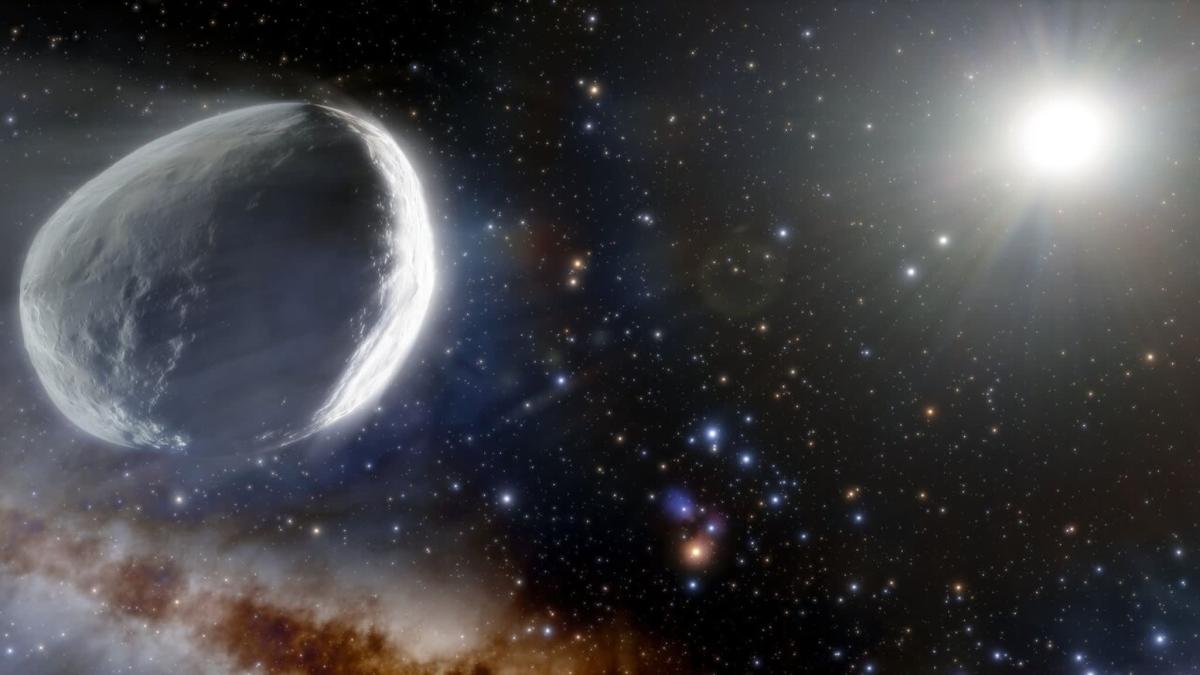A new study by a team of astronomers has revealed that the dynamics of the expansion of the universe and the development of its structure have been extensively explored. The largest comet ever seen The diameter is up to 150 km, Almost seven times the size Phos, The largest satellite in Tuesday.
Researchers of the International Cooperation Program Dark Energy Survey (DES) Megabyte Confirmation 2014 UN271, From nube de Oort And direction The Solar System, The largest and most distant comet known.
According to the astronomer’s analysis Will Greater, Megakite 2014 UN271 It transcends asteroid in dimensions 55 Pandora (67 km) and space rock Arroyo (33 km), the object of the belt Khyber.

According to the analysis of astronomer Will Greater, 2014 UN 271 asteroid 55 Pandora (67 km) and space rock Arcot (33 km), an object of the Khyber belt (Will Greater /)
In addition, experts say the mass of the megacometer 2014 UN271 Cometa Bernardinelli-Bernstein In memory of its inventors, it is 10 times more than that Hale-pop, One of the brightest comets of recent decades, discovered by astronomers on July 23, 1995 Alan Hale and Thomas Bob, Nicknamed the “Big Comet”.
Pedro Bernardinelli and Gary Bernstein They captured Mega CometFor the first time in 2014, the telescopic 570 megapixel was hidden in data collected by DECam Victor M. Blanco Four meters Cerro Tololo Inter-American Laboratory (CTIO), en Chile.
On that occasion, experts observed the largest galaxy in the spherical Oort cloud, located at the boundaries of the solar system, and They mistakenly thought it was a dwarf planet, But later they reclassified it as a comet.
Astronomers say the comet Bernardinelli-Bernstein, which is about 1,000 times larger than a regular celestial body, has a very long orbit and travels in the solar system from distant Oort clouds for millions of years.
Between 2014 and 2018, a large comet traveled 20 to 23 astronomical units (AU) through the universe. Each AU is approximately equal The distance between the earth and the sun (About 150 million kilometers).
The 2014 UN271 Mega Comet is an icy monument in the early history of this planetary system that displaced giant planets from the solar system, based on a scale that reflects an estimate of its largest size, unlike any seen before. Sun light.
Your current journey in the solar system It started at a distance of more than 40,000 AU from the sun. In other words, 40,000 times or six trillion kilometers farther from the star than Earth (0.6 light years, which is 1/7 the distance to the nearest star). To compare, Pluto It averages 39 AU from the sun.
This means that the comet Bernardinelli-Bernstein formed in the Oort cloud of matter ejected in the early history of the solar system. May be the largest member This imaginary collection of small astronomical bodies, and the first spot ever discovered on the incoming path.
Scientists estimate that by 2031, the closest approach to our planet will be recorded as it approaches the orbit of the megacomte. Saturn, To the extent that no risk index can be taken into account.


:quality(85)/cloudfront-us-east-1.images.arcpublishing.com/infobae/OLNQLJRERZDCRBK5TW2XPCFNTU.jpg)

:quality(85)/cloudfront-us-east-1.images.arcpublishing.com/infobae/VYMZLY2LCVF7JLLP2QY5TOANM4.jpg)
:quality(85)/cloudfront-us-east-1.images.arcpublishing.com/infobae/MKYXZKOXMFALPMPONCZCOUAWEE.jpg)